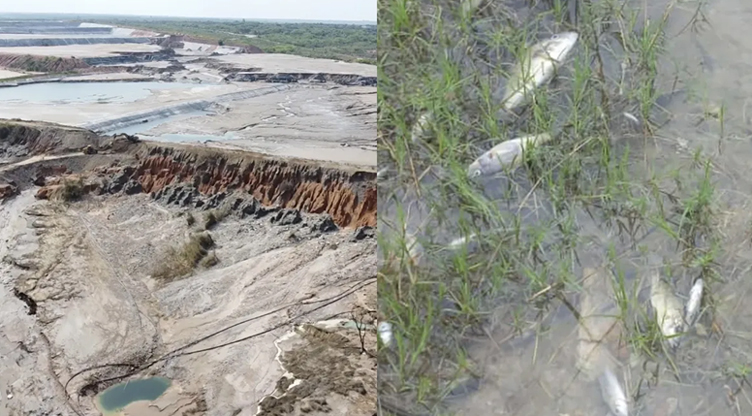Mining can be dangerous.
But it can also be catastrophic for the local environment if it isn’t done right.
That’s what one of the world’s most important copper regions is discovering right now.
In February, a Chinese-owned firm in the heart of Zambia’s copper belt failed to diagnose a looming threat at its tailings dam near Kitwe.
A place I visited on occasion back in my exploration geology days in Zambia.
According to recent sources, at least 1.5 million tonnes of poisonous waste escaped a failed tailings reservoir at the Chinese-owned Sino-Metals operation.
Over the last few months, this tailings waste has flowed into local waterways, killing fish and contaminating drinking water.
You can see the scale of the impact below:
| |
| Source: AP |
The mining accident has made international headlines. But so far, not much has been done to address the problem.
The US Embassy in Zambia escalated its concern about the scale of this disaster last week, ordering the immediate withdrawal of its officials from the area.
The US Ambassador to Zambia said its own investigations pointed to widespread contamination that included toxic substances like arsenic, cyanide, and uranium.
And believes the Zambian government hasn’t fully disclosed the extent of this disaster.
Mining Memo’s Take
There’s no shortage of mining managers and shareholders grumbling about Australia’s strict environmental laws.
‘Mining permitting delays are holding back the industry’ is the common catch-cry when supply issues start to surface.
But I don’t know about you, but I’d hate to see what happened in Zambia occur in Australia.
This accident serves as a humble reminder to investors why Australia has strict laws in place.
Just think about the alternative?
What would happen to the mining industry here if a similar tailings disaster occurred?
In terms of Zambia, I expect there’ll be major community pushback against any future mining developments after this.
Agricultural land across this region will remain unviable for decades, and streams will be toxic for years. Zambians living here have lost their livelihood and food source.
Ultimately, the Chinese-owned miner could lose its mining rights, as it should.
But think about the challenge that awaits any other company that wants to advance a project in this part of the world? A critical copper-producing region.
This disaster could potentially impact numerous ASX-listed explorers operating here.
The mining catastrophe in Zambia is a lesson in why permitting matters.
Ironically, I think it actually helps investors and the broader sector… Without adequate safeguards, this is what happens.
And it’s why Australia remains a choice destination for resource investors.
So, Should You Avoid Frontier Locations?
Full disclosure: I’ve recommended two mining stocks based in Africa for my paid investment advisory.
But that comes with extra due diligence.
If you’re going into less-regulated regions, you need to know what you’re getting into.
Frontier locations can offer advantages, like West Africa, one of the last regions where mineable gold still exists close to surface.
In terms of exploration potential, areas in this part of the world look more like the WA Eastern Goldfields from 100 years ago…Underexplored!
It all comes down to weighing the additional risks against the potential upside.
I’ve worked in Africa and understand some of the pitfalls to avoid. However, that does not eliminate the risk entirely.
For the most part, Australia and North America remain our focus for core long-term positions.
If that interests you, you can find out more here.
Until next time,
Regards,
 |
James Cooper,
Editor, Mining: Phase One and Diggers and Drillers



Comments